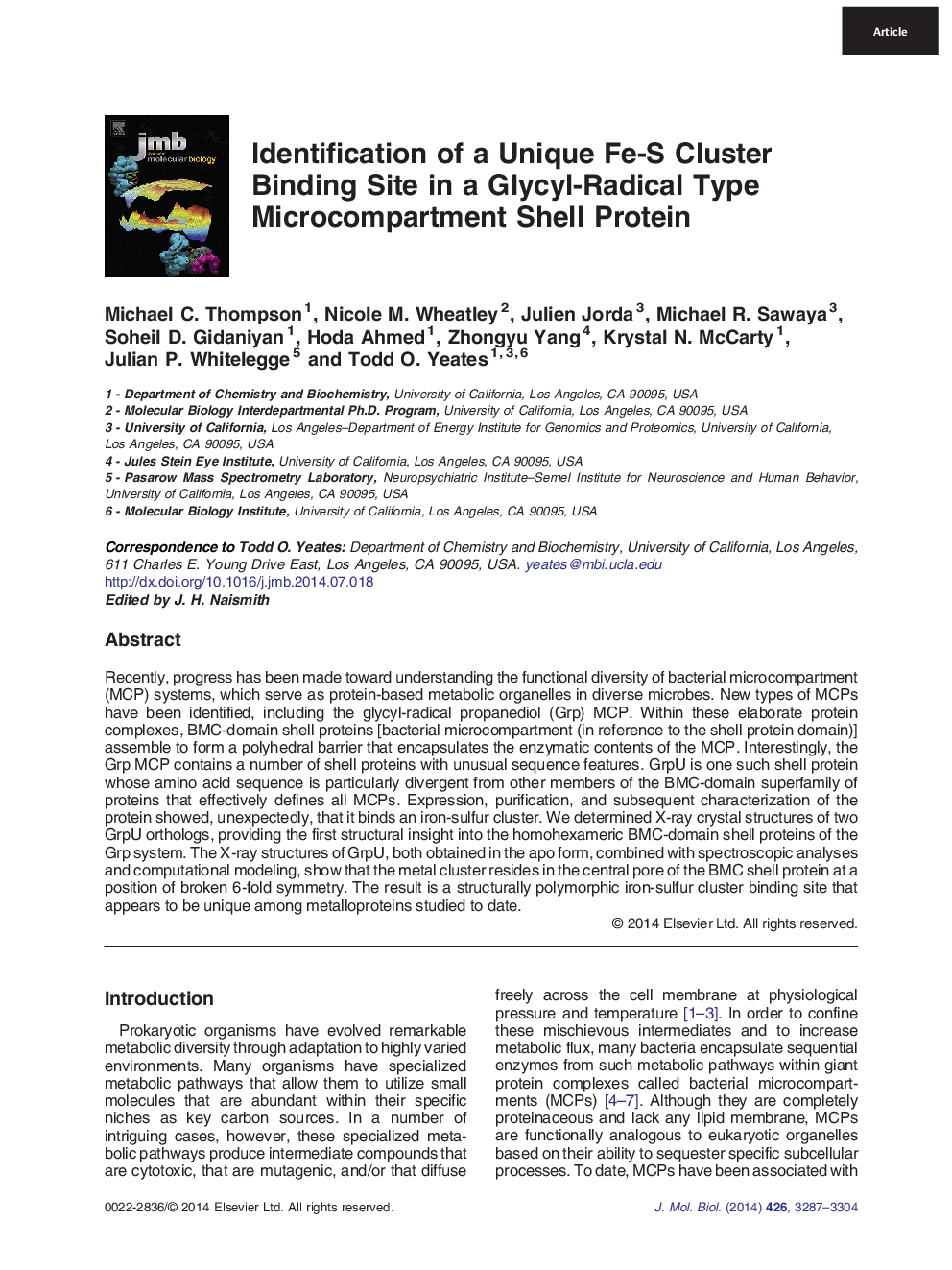| کد مقاله | کد نشریه | سال انتشار | مقاله انگلیسی | نسخه تمام متن |
|---|---|---|---|---|
| 2184610 | 1095893 | 2014 | 18 صفحه PDF | دانلود رایگان |

• GrpU is a divergent shell protein from a bacterial MCP that encapsulates a glycyl-radical diol dehydratase.
• A combination of X-ray crystallography, absorbance and electron paramagnetic resonance spectroscopy, and computational modeling revealed a unique Fe-S cluster binding site in GrpU.
• Breakage of hexameric symmetry, provided by conformational heterogeneity, is required for metal cluster binding to GrpU.
• GrpU represents a previously uncharacterized type of BMC domain metalloprotein.
Recently, progress has been made toward understanding the functional diversity of bacterial microcompartment (MCP) systems, which serve as protein-based metabolic organelles in diverse microbes. New types of MCPs have been identified, including the glycyl-radical propanediol (Grp) MCP. Within these elaborate protein complexes, BMC-domain shell proteins [bacterial microcompartment (in reference to the shell protein domain)] assemble to form a polyhedral barrier that encapsulates the enzymatic contents of the MCP. Interestingly, the Grp MCP contains a number of shell proteins with unusual sequence features. GrpU is one such shell protein whose amino acid sequence is particularly divergent from other members of the BMC-domain superfamily of proteins that effectively defines all MCPs. Expression, purification, and subsequent characterization of the protein showed, unexpectedly, that it binds an iron-sulfur cluster. We determined X-ray crystal structures of two GrpU orthologs, providing the first structural insight into the homohexameric BMC-domain shell proteins of the Grp system. The X-ray structures of GrpU, both obtained in the apo form, combined with spectroscopic analyses and computational modeling, show that the metal cluster resides in the central pore of the BMC shell protein at a position of broken 6-fold symmetry. The result is a structurally polymorphic iron-sulfur cluster binding site that appears to be unique among metalloproteins studied to date.
Graphical AbstractFigure optionsDownload high-quality image (122 K)Download as PowerPoint slide
Journal: Journal of Molecular Biology - Volume 426, Issue 19, 23 September 2014, Pages 3287–3304